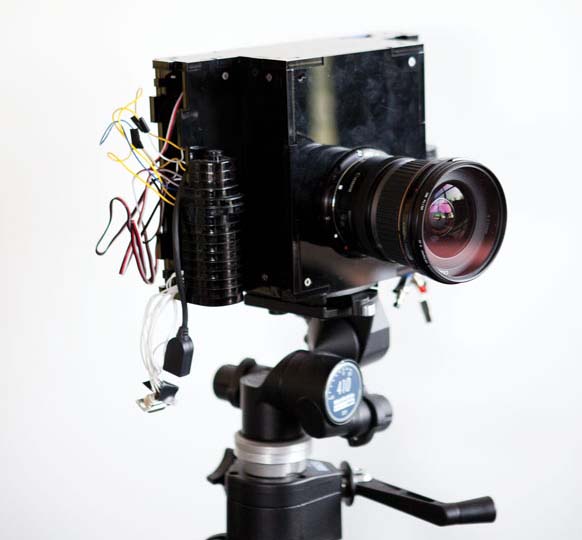Photographic Manipulation
David Jacobs, a graduate student at Stanford University, kneels on the floor and tosses playing cards into the air. A clunky black box with two flashes on top illuminates the cards midflight with strobing light and creates a digital photo that traces their progress through the air. Meet the Frankencamera, a hackable device made at Stanford to prove that the locked-down technology of commercial cameras is holding photography back.

Today’s cameras are essentially computers with optical components, but much of that computational power is inaccessible to consumers. Manufacturers block changes to the software and much of the hardware. The Frankencamera, however, can be reprogrammed or modified with extra sensors or controls.
Marc Levoy, a professor of computer science and electrical engineering, built the device to accelerate a field called computational photography, which uses software to push the limits of today’s cameras. A version is being developed to sell to a waiting list of researchers. But Levoy says he is developing the techniques to pressure camera firms to open up. “I don’t want to get into the camera business,” he says. “The goal is to spur industry to do this themselves.”
Keep Reading
Most Popular
Large language models can do jaw-dropping things. But nobody knows exactly why.
And that's a problem. Figuring it out is one of the biggest scientific puzzles of our time and a crucial step towards controlling more powerful future models.
How scientists traced a mysterious covid case back to six toilets
When wastewater surveillance turns into a hunt for a single infected individual, the ethics get tricky.
The problem with plug-in hybrids? Their drivers.
Plug-in hybrids are often sold as a transition to EVs, but new data from Europe shows we’re still underestimating the emissions they produce.
Stay connected
Get the latest updates from
MIT Technology Review
Discover special offers, top stories, upcoming events, and more.